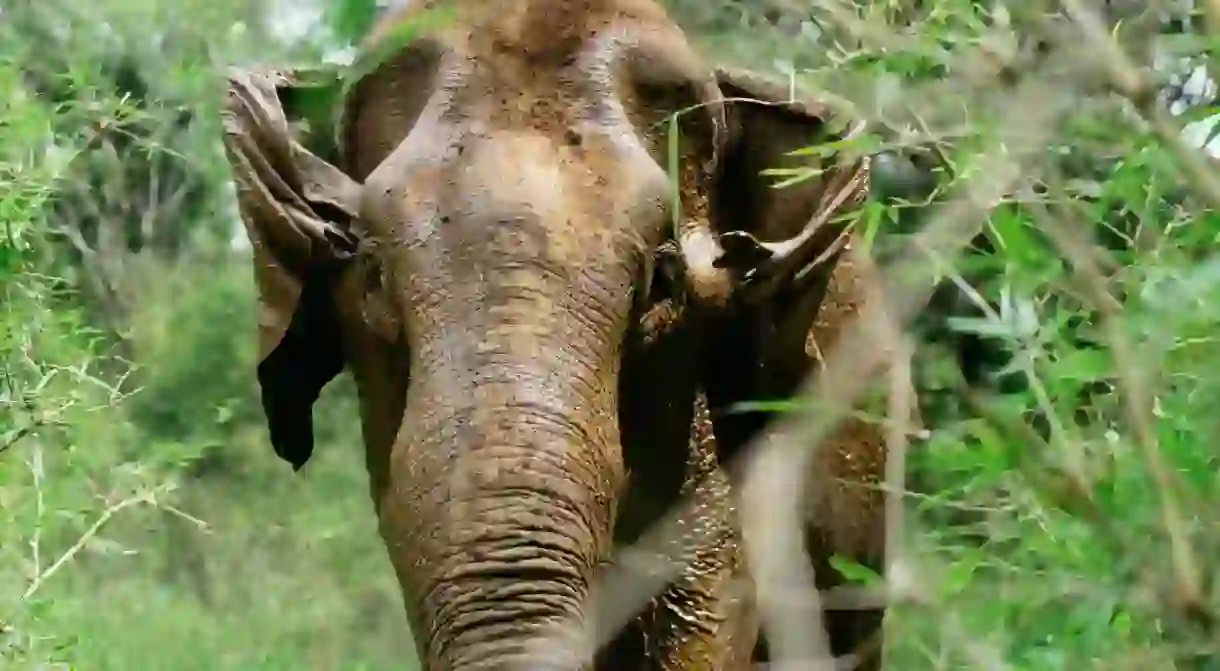Feeding Elephants at Cambodia's Mondulkiri Wildlife Sanctuary

Often over-worked, Cambodia’s elephants can face a miserable life until death. We visit one initiative that is offering the beasts a new lease of life in retirement.
Movement pierces the horizon as a small dot makes its way out of the thick jungle and across an open plain. It morphs into the beast it is as it gets closer, slowly huffing and puffing, stopping to wrap its trunk around a lone tree before trudging on along an orange dust track that snakes through the green.
Welcome to Mondulkiri Elephant and Wildlife Sanctuary, one of several projects operating in the remote southeastern province with the aim of offering respite to overworked elephants by providing them with a safe sanctuary in their natural habitat.


Saving the elephants
While Cambodia’s wild elephants are on the decline, the majority of initiatives operating in Mondulkiri focus on working elephants. The beasts are frequently used for arduous agricultural work, taking tourists on trips through the jungle or for intensive labour in the illegal logging trade, which is rampant in the area.
In a bid to help eradicate the problem, local NGO L.E.A.F. (Local Environmental Awareness Foundation) launched the sanctuary, setting up a peaceful place for retired elephants to live out the rest of their lives.


As part of its ethical retirement programme, villagers from underprivileged Bunong – a hilltribe that live in the area – communities that live nearby are encouraged to bring their ex-working elephants to the sanctuary in retirement.
The animals are often co-owned by several families in one village, and in exchange the organisation gives them financial compensation in the form of monthly support to help provide for, and educate the families. The elephants still technically belong to the families and are rented by the organisation.
Three elephants – a male and two females – currently call the site home. Rather than living their lives chained and in often squalid conditions, they now have the freedom to roam the expansive area of jungle, socialise, splash in water, roll in mud, and tear branches from trees with their trunks.



Meeting the mammals
To help sustain the sanctuary’s efforts, visitors can experience the elephants first hand and help out with the other eco-projects L.E.A.F. runs on the site. However, don’t expect any elephant rides as this obviously goes against the entire ethos.
Visitors can get up close and personal to the animals on the series of tours L.E.A.F. runs, ranging from the one-day elephant sanctuary tour to the overnight adventure. Each offers the opportunity to trek through the jungle – expect leeches, heaps of creepy crawlies and perhaps the odd scorpion or tarantula – to visit the elephants.
Because many of the animals were born into captivity, many don’t know how to survive in the wild, so each elephant is accompanied by a guide, or mahout, to steer them to food and away from trouble. They are left alone while asleep. Trekkers can meet the animals as they wallow in water or wade through the jungle, feeding them bananas along the way.




Meeting the elephants isn’t the only highlight, with Mondulkiri and its lush rolling landscape being a breathtaking part of Cambodia.
The jungle is home to a plethora of flora and fauna, with wildlife ranging from clouded leopards and Germain’s silver langur to pleated gibbons and slow lori. Waterfalls also dot the jungle, with the tour stopping off at one to kick back and take a rest or refreshing swim.
For those with a fiercer commitment to helping out the cause, L.E.A.F. also runs a volunteer programme, where those who pass the screening process can help plant trees and bamboo as part of the reforestation programme.
They can also make enclosures and wildlife nesting boxes, help spread their environmental messages through social media and marketing campaigns, and help push responsible tourism to other visitors.
All profits are pumped back into the project and pay for veterinary bills, elephant care, feeding and the income for the indigenous families, making a visit to the sanctuary priceless in more ways than one.


















